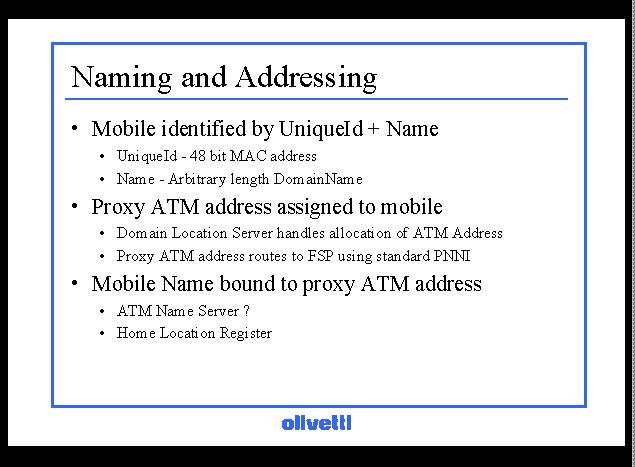 |

|

|

|

|
 |

|

|

|

|
More details about the naming and addressing of mobiles
As mentioned the mobile is identifed using both a fixed length UniqueId and a name.
The UniqueID is a 48 bit quantity hard-wired into the interface which is similar to a MAC address. This is guaranteed to be unique amongst mobiles and is used to identify the mobile at registration time. It could probably be used as the basis of a security mechanism but we havenít as yet done any work on authentication.
The mobile name is determined by the host that the interace is connected to. This is currently a domain name which is used by applications wishing to contact the mobile device. The name is of arbitrary length.
The proxy ATM address is assigned to the mobile on registration by the DLS.
This address is used by PNNI to route signaling connection requests for the mobile via the FSP.
The binding between the proxy ATM address and mobile name remains fixed while the mobile is registered in a domain. It is therefore a semi-dynamic binding and it is not clear whether the ATM Name server will be able to cope with this type of dynamic binding.
There are a number of possibilities for binding of names and ATM addresses in the mobile environment. The fallback scheme which we propose is similar to the mobile telephone system in which the DLS and Home Register are used as visitor location register and home location register. Communication with a mobile device then requires a stage of translation in which the local DLS performs the name to address translation.
It is conceivable that the final system may be a hybrid approach in which the mobile functionality is served from within the ATM Name Server interface, but uses the VLR, HR mechanism to provide mobile support.